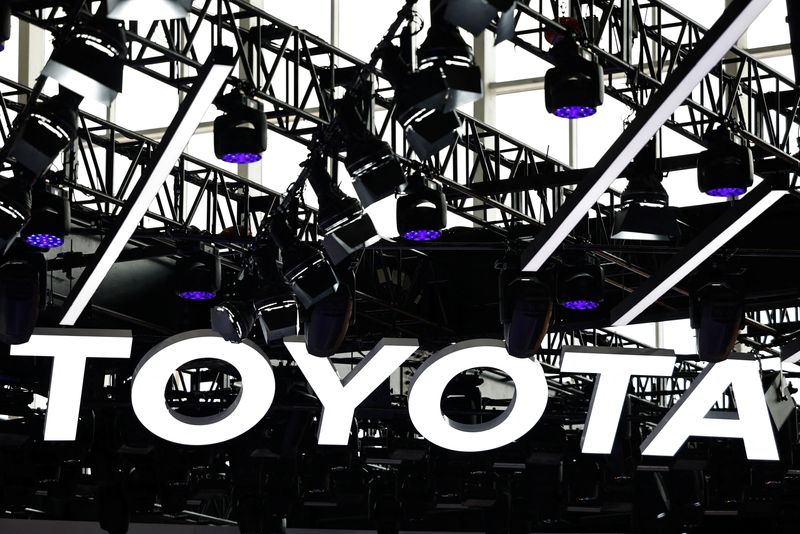By Maki Shiraki
TOKYO (Reuters) – Toyota aims to make at least 2.5 million vehicles a year in China by 2030, three people said, an overhaul that will bring its Chinese sales and production operations closer together and give local managers a freer hand in development.
The plan, which has not previously been reported, represents a strategic pivot for the world’s best-selling automaker in the world’s largest auto market, underscoring its ambition to increase the sales generated in recent years by BYD (SZ:) and other local players lost to be recovered.
Toyota’s strategy contrasts with that of other global automakers, including Japan, which are either scaling back or withdrawing from China.
The goal is to increase production to as many as 3 million vehicles a year by the end of this decade, two of the people said. However, a formal target has not yet been identified, the three people said. All the people declined to be identified because the case has not been made public.
The increased number represents a 63% increase over the record 1.84 million vehicles it produced in China in 2022. Last year it produced 1.75 million vehicles there.
Toyota has notified some suppliers of the planned expansion, hoping to reassure parts makers of their commitment to China and thereby secure its supply chain, the people said.
In response to questions from Reuters, Toyota said in a statement: “With the fierce competition in the Chinese market, we are continuously considering various initiatives.” It said it would continue to work on making “better and better cars” for the Chinese market.
The Japanese automaker wants to bring the sales and production operations of its two Chinese joint ventures closer together to improve efficiency, two of the people said.
The aim is also to transfer as much of the development responsibility as possible to China-based personnel who have a better understanding of local market preferences, especially in electrified and connected car technology, two of the people said.
‘TOO LATE’
The moves indicate a growing realization within Toyota that it must rely more on local staff to take the lead and accelerate product development in China, one of the people said, adding that otherwise it “will be too late.”
Legacy automakers, including Toyota, have been outmaneuvered in China, while domestic EV makers are rapidly rolling out affordable battery-powered cars with advanced technology.
Last year, Toyota announced plans to deepen cooperation between its R&D center in Jiangsu province and its two local joint ventures.
One problem, representative of Toyota’s broader problems, is that cars developed independently by joint venture partners sell better than cars produced jointly with Toyota.
For example, FAW Group’s Hongqi brand and GAC Group’s Aion EV both sell FAW Toyota Motor (NYSE:) and GAC Toyota Motor’s respective models. Toyota now wants to better integrate the knowledge of local partners into its cars.
Currently, each of the two joint ventures produces and sells the same vehicle with a different design and company name – the so-called “coupled vehicles”. In the future, production of each car will be consolidated into one of the joint ventures, two of the people said.
The models will be available at the dealers of both joint ventures.
While Japanese automakers have been affected, so have Japanese parts suppliers with operations in China.

Toyota announced in its earnings results on Wednesday that operating profit in China fell during the first half of the fiscal year, mainly due to higher marketing costs due to intense price competition against Chinese brands.
In the midst of that competition, Mitsubishi Motor Corp (OTC:) has now withdrawn from China Honda (NYSE:) Motor and Nissan (OTC:) Motor have decided to reduce local production capacity.


